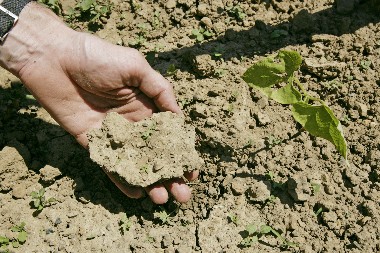Microbial regulation of organic matter decomposition at the regional scale
 Project Leaders: Prof. Dr. Ellen Kandeler and Dr. Christian Poll, Institute of Soil Science and Land Evaluation, Department of Soil Biology
Project Leaders: Prof. Dr. Ellen Kandeler and Dr. Christian Poll, Institute of Soil Science and Land Evaluation, Department of Soil Biology
Funding period: 2012-2018
Our project provides the analytical basis for improving the parameterisation of biogeochemical models (e.g., DAISY-EXPERTN) by introducing dynamic feedbacks between belowground communities and climate. Whereas we currently measure seasonal and regional variation of temperature sensitivity functions of soil microbial processes involved in carbon cycling, we will focus on group specific turnover times (bacteria and fungi) and flow of carbon into specific groups of soil microorganisms and their seasonal substrate use efficiency during the next phase of the project.
A microcosm experiment will be established in cropped plots at both regions (Swabian Alb and Kraichgau) to study the turnover times of bacterial and fungal biomass using the 13C-PLFA and 13C-ergosterol profiling approach. We hypothesise that fungi store newly assimilated carbon (13C signal) for a longer period than bacteria due to their slower turnover times. Manipulating the input of resources in a field experiment will allow us to investigate separately the C flow through bacteria and fungi. We will choose the following labelled compounds: (1) 13C glucose (to account for mainly bacterial C incorporation) and (2) 13C phenol/lignin precursors (to account for mainly fungal C incorporation).
We will establish the microcosms four times a year (early spring, summer, autumn and late autumn). Microbial efficiency will be assessed by measuring 13C-substrate incorporation into different components of the microbial biomass (Cmic, bacterial and fungal PLFAs, ergosterol) and loss as 13CO2 in the field for up to 48 hours after installation of the microcosms. Our results will be used by project partners to examine the sensitivity of multi-compartment carbon models (e.g. CN DAISY) to altered microbial growth efficiency. In addition, we will test which of the following: substrate quality, site specific microbial decomposer communities, or abiotic soil properties, is the dominant driver of spatial variation in litter decomposition at the regional scale.
